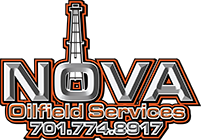Maintaining the oilfield equipment we rent to you is crucial not only for its performance but also for the safety and efficiency of your operations. Proper upkeep ensures that the machinery operates at peak efficiency, which in return minimizes downtime and maximizes productivity on your projects. In this article, we delve into the essential practices of routine maintenance for the heavy-duty equipment used in oilfield operations.
Starting with a clear understanding of what maintenance entails and why it is critical will set a sturdy foundation for the subsequent details. We’ll discuss practical daily and weekly checklists that can guide you in keeping the equipment in top shape. Additionally, recognizing common issues and knowing basic troubleshooting steps can significantly reduce downtime. Lastly, understanding when to reach out to us for help is important to prevent any minor issues from escalating into major setbacks. This knowledge helps keep the equipment functioning and extends its lifespan, providing greater reliability and value for your rental investment.
Understanding the Basics of Oilfield Equipment Maintenance
Maintaining oilfield equipment is crucial for ensuring operational efficiency and prolonging the life of the machinery we rely on daily. Effective maintenance begins with understanding the specific needs of each piece of equipment. For instance, high-precision tools require more frequent and detailed checks than more robust machinery. We focus on providing our workers with thorough training on the operational requirements of each machine, ensuring that they can operate it proficiently and maintain it according to industry standards.
Regular maintenance involves cleaning, checking fluid levels, replacing parts that are prone to wear and tear, and ensuring that all equipment operates at peak efficiency. Each piece of machinery comes with a manufacturer’s guide that includes specific maintenance schedules that must be followed to maintain its functionality and safety. Adhering to these guidelines not only helps prevent equipment failure but also ensures compliance with safety regulations, which is critical in the high-risk oilfield environment.
Daily and Weekly Maintenance Checklists for Rented Equipment
To keep our oilfield equipment in top condition, we implement comprehensive daily and weekly maintenance checklists. Daily checklists include basic visual inspections for any apparent defects, checking oil and fluid levels, ensuring that safety guards are in place, and testing the functionality of emergency stops. These routine checks help identify potential issues before they lead to equipment failure.
Our weekly checklists are more detailed and include tasks such as inspecting and cleaning filters, checking hose connections for leaks, and testing the calibration of gauges and indicators. We also recommend a thorough operational test run to ensure that the equipment is performing as expected, without any unusual noises or vibrations that might indicate a problem. This systematic approach to maintenance not only helps prevent downtime but also extends the lifespan of the equipment, ensuring that it remains a reliable asset for ongoing projects.
Common Issues and Troubleshooting for Rented Oilfield Equipment
We often encounter common issues with our rented oilfield equipment, which we’ve learned to swiftly address to minimize downtime. One frequent problem is hydraulic system failure, generally caused by leaks or air in the system. We train our crew to check hydraulic hoses and connections regularly for any signs of damage or wear, and to report and replace them if necessary. Another typical issue is the malfunction of drilling tools due to continuous use, which can lead to decreased performance and accuracy. For this, routine checks and calibration are crucial.
Engine troubles in heavy machinery can disrupt an entire day’s work. Such issues generally stem from overheating, poor fuel quality, or lack of maintenance. By ensuring that all engine-driven equipment is serviced regularly and that only high-quality fuel is used, we help prevent these common setbacks. By recognizing these issues early through our troubleshooting protocols, we can significantly reduce delays and maintain the productivity of our projects.
When to Contact Your Rental Company About Equipment Issues
It’s imperative to know when to reach out to us about equipment issues. Minor problems such as a replaced hose or refilling hydraulic fluids are generally manageable onsite. However, if the equipment experiences continuous hydraulic failures, significant engine issues, or any problem that poses a safety risk, it’s crucial to stop operation and contact us immediately. We prioritize these calls to ensure that there’s minimal interruption to your project and to maintain our safety standards.
Additionally, if you notice that equipment isn’t performing up to its standard even after routine troubleshooting, it might indicate a more serious underlying issue that requires professional attention. We encourage our clients to report these incidents as swiftly as possible. Our expert technical team is always ready to provide the necessary support, whether that means dispatching a technician to your site or supplying a replacement unit to keep your operations running smoothly.
Conclusion
Maintaining and troubleshooting oilfield equipment are key aspects of managing a successful oilfield operation. By adhering to the maintenance schedules, understanding common equipment issues, and knowing when to reach out for more expert help, you can drastically reduce downtime and increase the efficiency and productivity of your operations. Remember, the integrity and performance of your equipment are vital to the safety and success of your projects.
If your project needs reliable oil field equipment with proactive support and service, contact Nova Oilfield Services. We’re dedicated to providing you with not only the best equipment but also ongoing support to ensure your operations run as smoothly and safely as possible.








